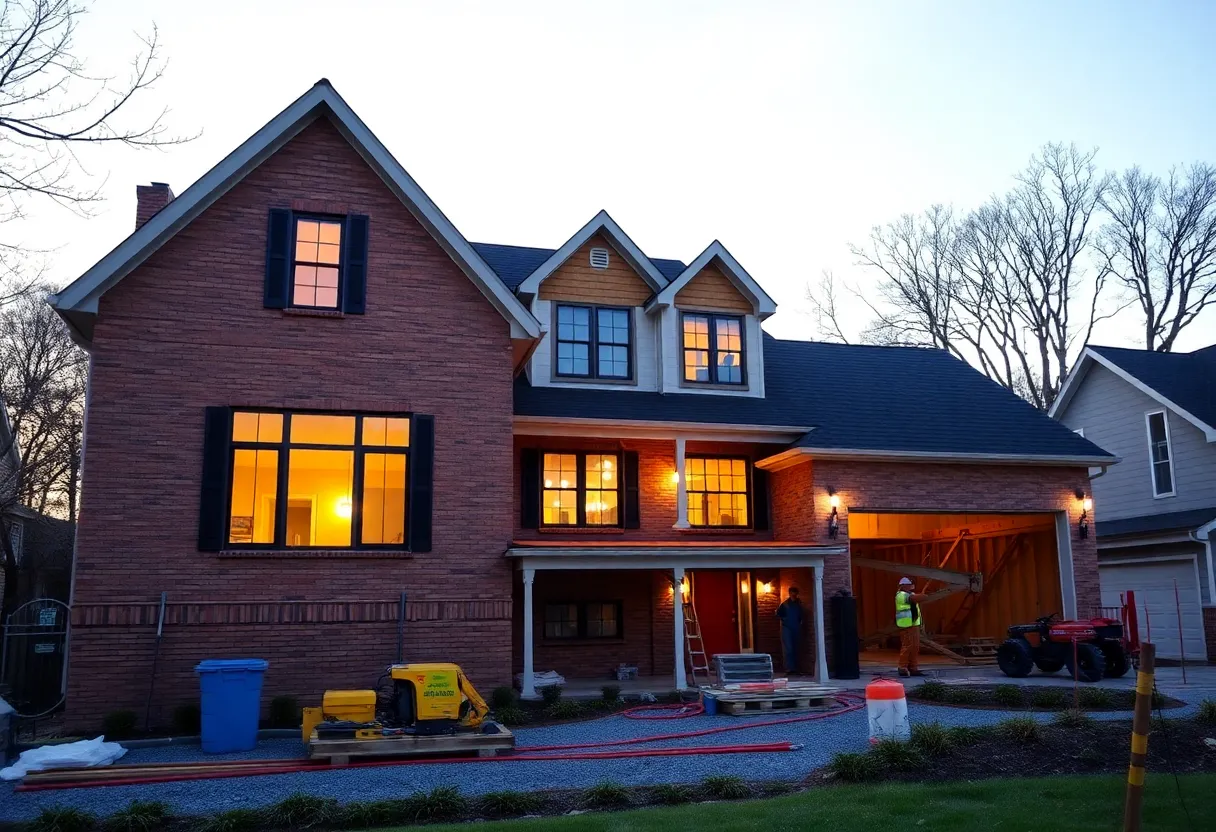What Are the Essential Preparations for a Smooth Home Construction Experience?
Building a new home is a significant investment that demands meticulous planning and organization. To ensure the project proceeds efficiently and results in a satisfactory outcome, comprehensive preparation is vital. Proper groundwork minimizes delays, controls costs, and enhances overall quality. This article delineates key preparatory steps essential for a smooth home construction journey, emphasizing a structured approach and critical considerations.
1. Define Clear Objectives and Budget
Establish Precise Goals and Expectations
Begin by articulating specific objectives for your home construction project. This includes design preferences, size, layout, style, and any custom features. Clear goals set the foundation for planning and help communicate your vision effectively to architects, designers, and contractors.
Determine Realistic Budget Constraints
The budget must encompass land acquisition costs, construction expenses, permits, utility connections, and unforeseen contingencies. Establishing a detailed budget upfront provides a guide for decision-making and helps prevent overspending.
Prioritize Financial Planning
Secure financing in advance and explore different funding options. Consider additional costs such as landscaping, furnishing, and future maintenance. Maintain flexibility for unexpected expenses to avoid project disruptions.
2. Conduct Comprehensive Site Analysis
Perform Site Suitability Assessment
Evaluate the land’s topography, soil stability, drainage, and environmental constraints. This assessment informs foundation design and construction approaches, reducing risks associated with unsuitable land conditions.
Review Zoning and Regulatory Requirements
Investigate local zoning laws, building codes, and land use restrictions. Obtain necessary permits and understand setback and height restrictions. Compliance ensures legal authorization and prevents future legal complications.
Assess Accessibility and Infrastructure
Check access routes for construction vehicles and materials. Confirm proximity to utilities such as water, sewer, electricity, and internet. Early detection of infrastructure gaps allows for timely planning and connection arrangements.
3. Engage Qualified Professionals Early
Select a Reputable Architect or Designer
The architect’s expertise influences the project’s success. Choose professionals with a solid portfolio, local experience, and good references. Collaborate closely to develop functional, aesthetic, and cost-effective plans.
Hire a Licensed Construction Contractor
Contractors should be licensed, insured, and experienced in residential projects. Obtain multiple bids, verify references, and review project timelines. A skilled contractor manages construction quality, schedules, and workforce effectively.
Involve Structural and Civil Engineers
Consult engineers for foundation design, structural integrity, and site modifications. Their insights help mitigate risks related to soil conditions, load-bearing capacity, and environmental factors.
4. Develop Detailed Construction Plans
Create Architectural and Structural Drawings
Accurate, detailed plans form the blueprint for the construction process. Precise drawings facilitate permits, cost estimates, and construction accuracy. Include electrical, plumbing, HVAC, and landscaping details.
Secure Necessary Permits and Approvals
Permitting is a critical step before breaking ground. Ensure all required licenses are obtained, including building permits, environmental clearances, and utility connections. Proper documentation prevents legal penalties and project halts.
Establish Construction Timeline
Define realistic milestones and schedules. Buffer time for delays, inspections, and material deliveries should be incorporated. Clear timelines facilitate project management and contractor accountability.
5. Source Quality Materials and Suppliers
Identify Reliable Suppliers
Establish relationships with reputable vendors for materials like cement, steel, timber, and finishes. Prioritize quality and consistency over cost alone. Early procurement prevents delays caused by procurement issues.
Plan for Material Delivery Coordination
Coordinate delivery schedules with construction phases. Proper sequencing reduces clutter, storage costs, and risk of damage or theft on-site.
Consider Sustainable and Cost-effective Options
Incorporate eco-friendly materials and energy-efficient products where feasible. These choices can reduce long-term operational costs and improve the home’s environmental profile.
6. Implement Effective Project Management Strategies
Appoint a Project Manager or Owner’s Representative
A dedicated project manager monitors progress, manages communication, and handles issues proactively. This role ensures adherence to scope, schedule, and budget.
Establish Clear Communication Protocols
Maintain regular contact channels among all stakeholders. Weekly updates, site meetings, and documentation reduce misunderstandings and facilitate swift decision-making.
Set Up a Documentation and Record-keeping System
Track contracts, receipts, change orders, permits, and inspection reports meticulously. Proper records support accountability and ease dispute resolution if needed.
7. Prepare the Construction Site
Site Clearing and Excavation
Ensure the land is cleared of debris, vegetation, and obstructions. Excavation should be performed per engineering specifications, considering future landscaping and utility routing.
Implement Site Safety Measures
Establish fencing, signage, and safety protocols. Protect workers and visitors, and minimize liability risks. Securing the site early deters theft and vandalism.
Plan for Waste Management and Storage
Designate areas for storing materials and disposing of construction waste. Sustainable practices include recycling and reuse to reduce environmental impact.
8. Anticipate and Manage Risks
Develop Contingency Plans
Identify potential risks such as weather delays, labor shortages, or supply chain issues. Prepare strategies to mitigate these risks effectively.
Obtain Adequate Insurance Coverage
Construction insurance protects against damages, injuries, and legal liabilities. Verify coverage adequacy before construction commences.
Plan for Quality Assurance and Control
Implement inspections at critical stages. Regular quality control ensures adherence to standards, reducing rework and costly corrections.
9. Establish Realistic Expectations and Flexibility
Communicate Clearly With Stakeholders
Maintain transparency with stakeholders about progress, challenges, and changes. Realistic expectations foster trust and cooperation.
Be Prepared for Project Variability
Unforeseen circumstances are inevitable. Flexibility in project scope, schedule, and budget enables adaptive responses without compromising quality.
Conclusion
A successful home construction experience hinges on thorough preparation. From defining objectives and budgets to site analysis and professional engagement, each step plays a vital role. Proper planning streamlines construction, reduces risks, and delivers a home that meets expectations. Prioritize meticulous attention to detail and proactive management across every phase for optimal results.
Author: STAFF HERE BALTIMORE WRITER
BALTIMORE STAFF WRITER The BALTIMORE STAFF WRITER represents the experienced team at HEREBaltimore.com, your go-to source for actionable local news and information in Baltimore, Baltimore County, and beyond. Specializing in "news you can use," we cover essential topics like product reviews for personal and business needs, local business directories, politics, real estate trends, neighborhood insights, and state news affecting the area—with deep expertise drawn from years of dedicated reporting and strong community input, including local press releases and business updates. We deliver top reporting on high-value events such as the Baltimore Book Festival, Preakness Stakes, and Artscape. Our coverage extends to key organizations like the Baltimore Chamber of Commerce and Visit Baltimore, plus leading businesses in shipping and healthcare that power the local economy such as the Port of Baltimore and Johns Hopkins Medicine. As part of the broader HERE network, we provide comprehensive, credible insights into Maryland's dynamic landscape.





